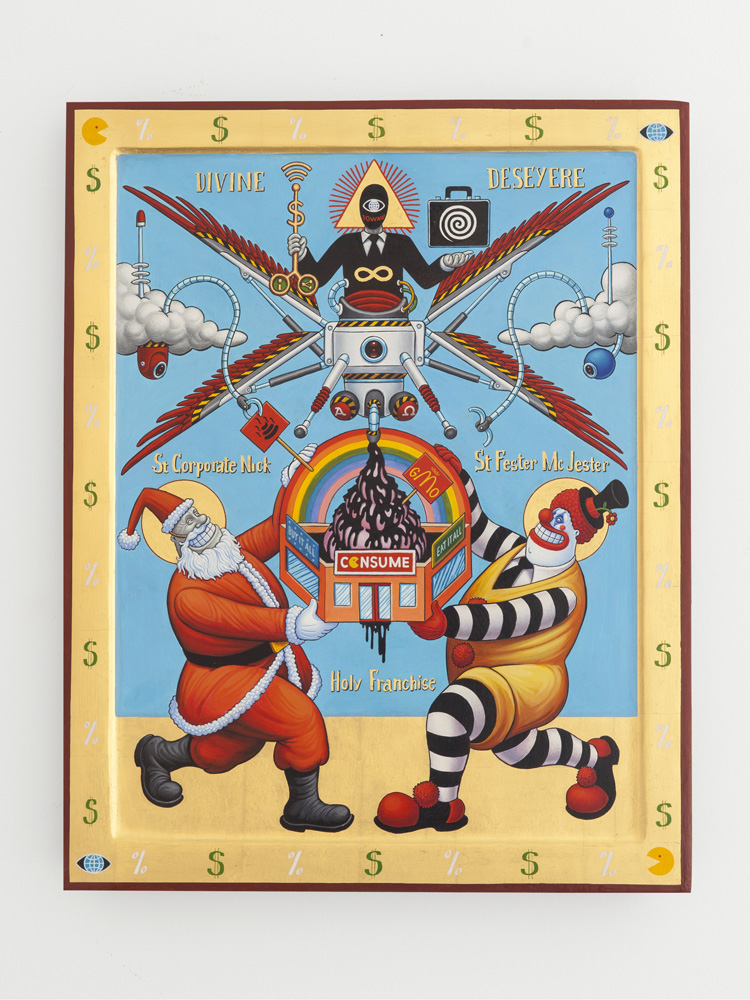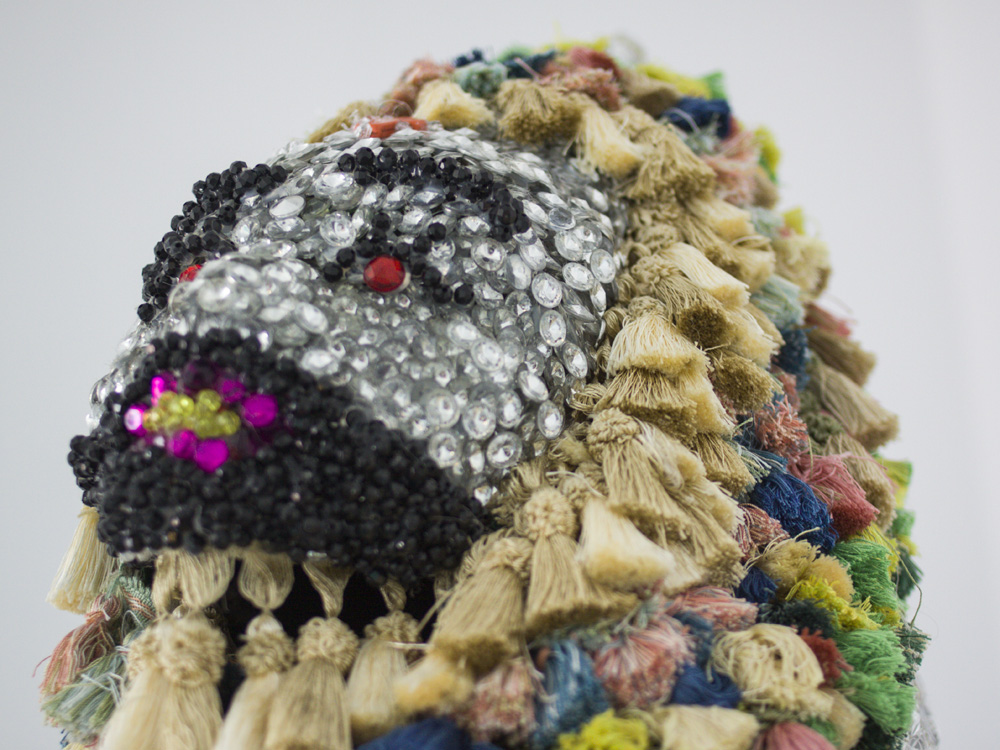Although most of us are already back to our desks from a much-needed holiday, the summer season is far from over in the Greek islands. Athens- and Mykonos-based contemporary art platform Dio Horia has just opened its last show for the season, featuring two solo presentations by artists Aleksandar Todorovic and Raoul de Nieves, together with a showcase of works by around 40 Greek and foreign artists. The main ground-floor room and a smaller room on the first floor were filled with artworks by artists that have previously exhibited with Dio Horia, including Tracey Emin, Juergen Teller and many others from abroad, as well as Olga Migliaressi-Phoca, Alexandros Tzannis, Rallou Panagiotou, Panos Tsagaris, Margarita Myrogianni, Ioannis Spiliopoulos and Anastasia Douka from Greece.
Text by Kiriakos Spirou
Photos courtesy Dio Horia Contemporary Art Platform

For his solo show Buy it All, Eat it All, Serbian painter Aleksandar Todorovic presents a series of new paintings created in his signature style that combines the visual language of comics and commercial illustration with the typology of Orthodox Christian iconography. Born and raised in Belgrade, Todorovic has often created work in series, like for example his Iconostasis of Isms and Serbisms, which borrows the format of the Orthodox iconostasis (the panel that separates the nave from the sanctuary in a church, in the Orthodox tradition covered with one or several horizontal lines of icons) to weave a tapestry of visual criticism on Capitalism, Communism, Nazism and their Serbian versions. Perhaps inspired by the symmetry of Byzantine architecture and art, Todorovic often structures his paintings as completely symmetrical compositions, where the left part of the image is like a mirror of the right.
For the exhibition at Dio Horia, the artist goes a step further and creates triptychs of images, some on carved and gold-leafed wood in the manner of Byzantine icons, that are symmetrical as a group, evoking a certain spirituality and sacredness in their design—albeit deceitfully so, as the saintly figures depicted are personifications of global malices such as corporate capitalism and consumerism. In his unsettling images, Todorovic draws humans as mere puppets in a riotous celebration of exploitation and destruction, where war, technology, the meat industry and the media descend from the heavens as angels and saints to bring divine reassurance to a twisted society that has gone utterly wrong. What still stands as a surprise is how such explicitly critical and political work found its way to Mykonos to begin with, a destination that draws hundreds of thousands of visitors every summer for non-stop partying, fine dining and shopping.
On the same gallery floor but in a different room, Mexican and New York-based artist Raul de Nieves presents a collection of works that are the result of a residency at Dio Horia this summer. Comprising headpieces, drawings on various materials and a full-size dress sculpture, de Nieves’s exhibition is titled Thirty3, signalling the artist’s age as a crucial point in his life and career. Particularly impressive are his mesmerising headpieces that can be worn as masks, and which are made of hundreds of plastic buttons that look like shiny gems. These ritualistic objects are placed on pedestals like precious relics, and they depict bearded faces with lipstick and christian crosses on their foreheads. The sculpture is made of the same type of beads and buttons, and shows a figure carrying a miniature of these masks in its hands, like a priestess in drag carrying an offering, or a queer Theotokos carrying her child. A drawing of a pixelated St George killing a dragon—a very traditional theme in Orthodox painting—adds even further to the exhibition’s religious undertones, which inevitably echo the christian iconography seen in Todotovic’s work across the hallway.

Both beautifully curated, the shows are full of excess: de Nieves playfully evokes the glittery outfits of larger-than-life New York drag queens, their glamour and bling, whereas Todorovic creates a more structured impression of debauchery and grotesque capitalist frenzy disguised behind the cheerful colours of advertisement and comic books. By juxtaposing these two artists, the curators have facilitated an exchange that sheds light into the workings of western society, like deep cuts into the skin. That which Todorovic mocks as sacred and godsend, actually afflicts de Nieves in real-life, in social, economical and political terms. And that which is hallowed in Todorovic’s well-ordered dystopian universe, de Nieves whimsically avoids. If Todorovic reveals the fake beauty of trashy ideologies through his work, de Nieves elevates trash into something essentially beautiful in itself. Even de Nieves’s two-meter-wide panorama of global landmarks drawn on a piece of leather (Memento Mori, 2017) is more of a goodbye to civilisation than a nostalgia for it; both artists see the dragon, but they kill it in completely different ways.
Founded in 2015 by curator Marina Vranopoulou, Dio Horia stages exhibitions in a beautifully restored traditional house in the heart of Mykonos town, where it also hosts artists for short residencies, performances and more. The gallery’s recently completed rooftop bar has become something of a local art-hangout, featuring bright yellow walls, striped balconies, original artworks on the counter and spectacular views of the town, the port and of course the sunset. If all this sounds enticing, jump on the first plane or ferry to Mykonos now while the weather is still warm, and catch the show before it closes on the 20th of September. For more info visit the Dio Horia official website.
